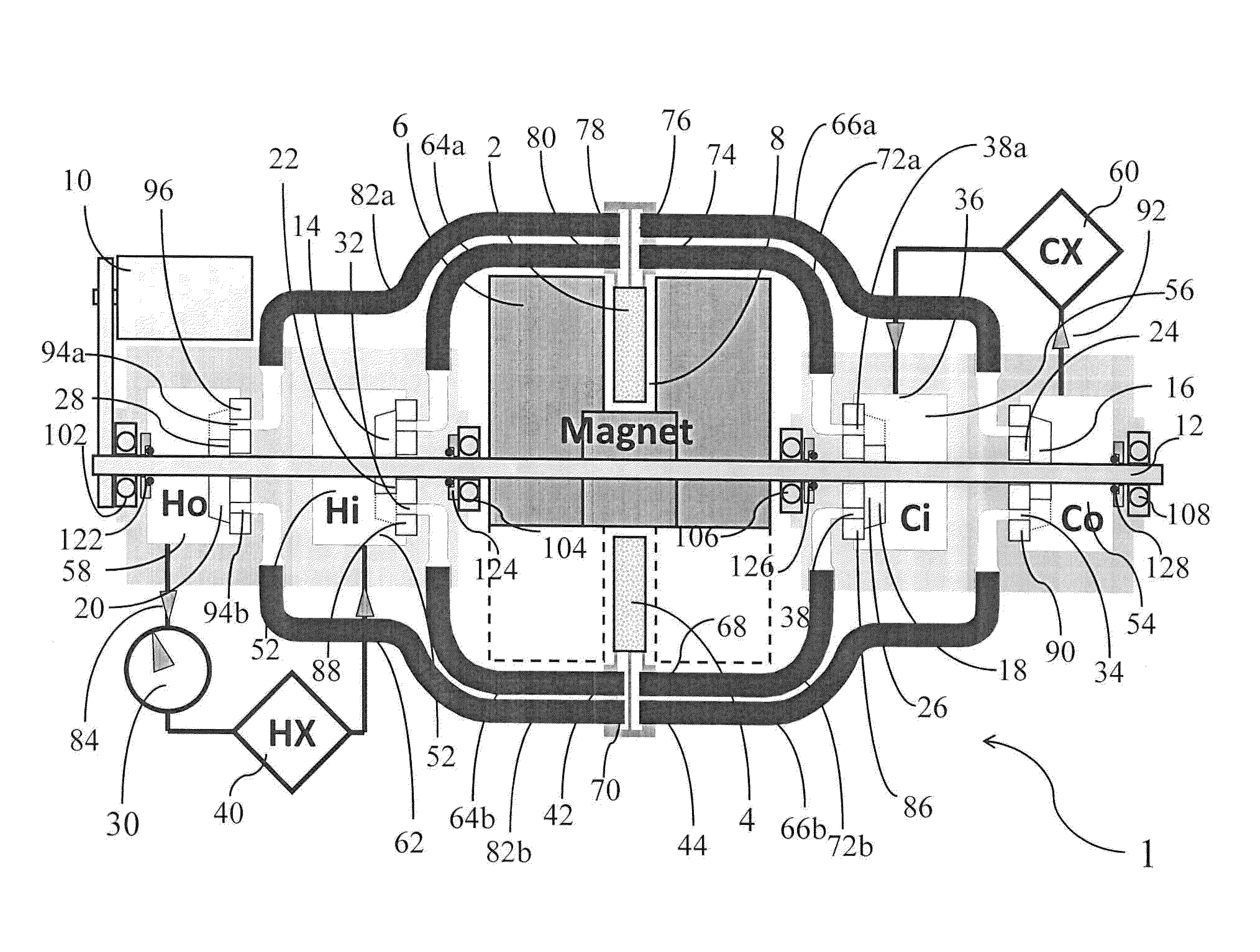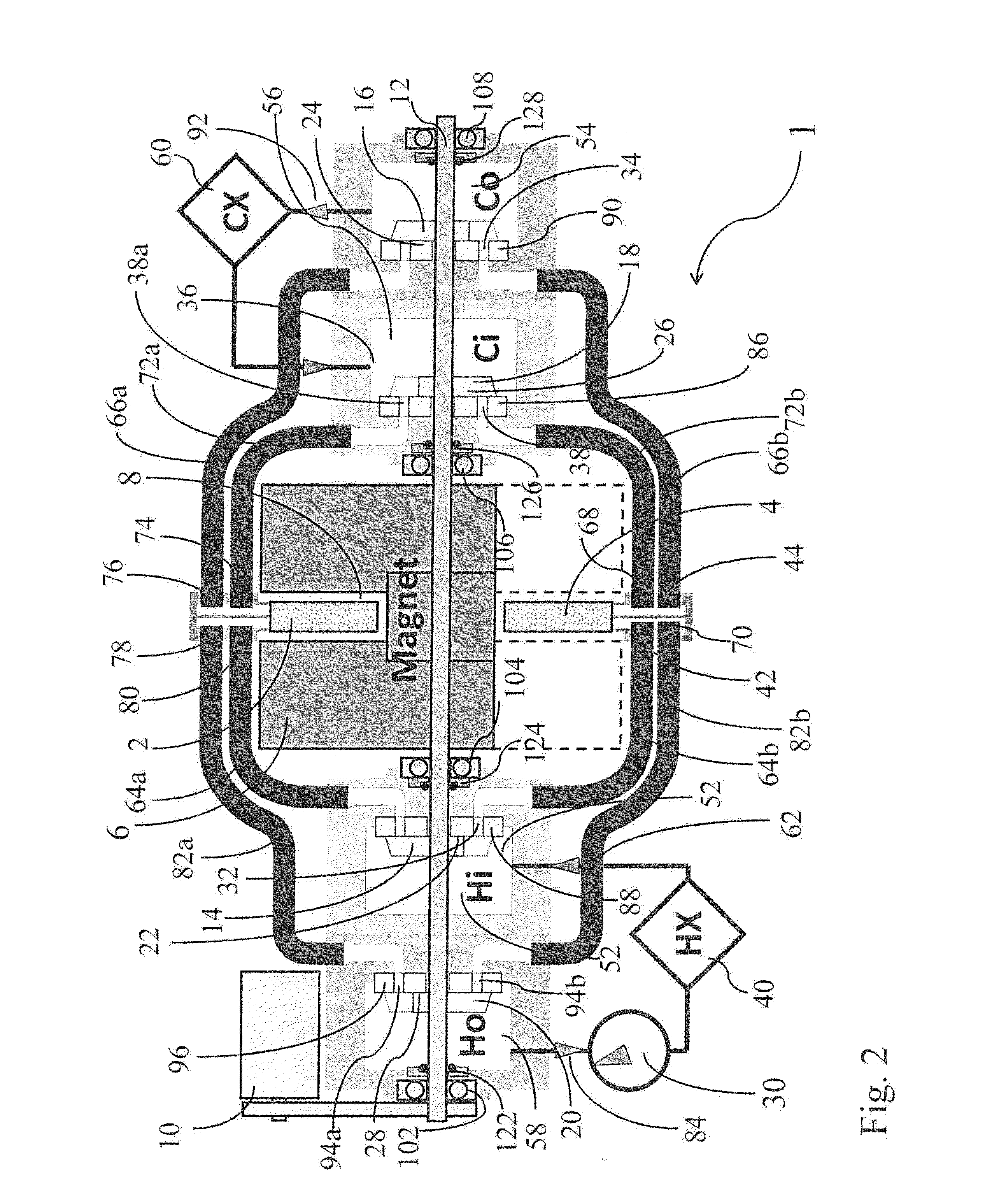Magnetic Refrigeration System With Improved Flow Efficiency
a technology of magnetic refrigeration and flow efficiency, applied in the direction of refrigeration machines, machines using electric/magnetic effects, lighting and heating apparatus, etc., can solve the problems of under-utilization of magnetocaloric beds and reduce efficiency, and achieve the effect of facilitating balancing and reducing efficiency
- Summary
- Abstract
- Description
- Claims
- Application Information
AI Technical Summary
Benefits of technology
Problems solved by technology
Method used
Image
Examples
first embodiment
[0052]The invention comprises a “rotating magnet” magnetic refrigerator (RMMR) which uses rotary disk valves to control flow to and from the beds where these valves are located coaxially with the shaft rotating the magnet assembly. this invention is shown in FIG. 2. FIG. 2 shows a cross section of a two-bed system 1, where a first bed 2 (magnetized) is within the gap 8 of the magnet assembly 6 while a second bed 4 (demagnetized) is outside the gap 8 of the assembly. A motor 10 (which may be an electric motor) rotates the central shaft 12, which is mounted to bearings 102, 104, 106 and 108, and passes through rotary seals 122, 124, 126 and 128. This central shaft 12 also drives the rotors 14, 16, 18, 20 in each of the coaxial valves 22, 24, 26, 28. A pump 30 drives fluid flow through the system 1.
[0053]In the configuration shown in FIG. 2, the rotor 14 in the hot inlet (Hi) valve 22 uncovers the hole 32 connected to the hot inlet port 42 of the demagnetized (lower) bed 4. At the same...
sixth embodiment
[0072]Although this invention enables conduits of a similar flow function to be of equal length, conduits of dissimilar flow function, such as hot outlet and hot inlet, may be of different length. In the case where the flows in conduits of dissimilar flow function are not of the same magnitude, it may be advantageous to adopt a design where the conduits of functions that carry the highest flow rates are made the shortest. For example, in the case that was described in connection with FIG. 9, where four beds at a time undergo cold to hot flow while only two beds at a time undergo hot to cold flow, it could be advantageous to make the conduits carrying hot to cold flow shorter than the pipes carrying cold to hot flow. Note that the total hot to cold flow carried by all the beds is the same as the total cold to hot flow carried by all the beds, but because fewer beds carry cold to hot flow than carry hot to cold flow, the rate of flow in each conduit that carries cold to hot flow will ...
PUM
 Login to View More
Login to View More Abstract
Description
Claims
Application Information
 Login to View More
Login to View More - R&D
- Intellectual Property
- Life Sciences
- Materials
- Tech Scout
- Unparalleled Data Quality
- Higher Quality Content
- 60% Fewer Hallucinations
Browse by: Latest US Patents, China's latest patents, Technical Efficacy Thesaurus, Application Domain, Technology Topic, Popular Technical Reports.
© 2025 PatSnap. All rights reserved.Legal|Privacy policy|Modern Slavery Act Transparency Statement|Sitemap|About US| Contact US: help@patsnap.com



